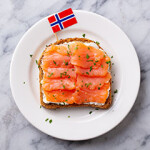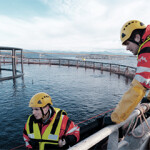More work, less fish: Amount of fish caught for effort expended has declined since 1950

Global fishing fleets have exploded in size and power since the 1950s, even as it takes more and more effort to catch fewer fish, according to recent research.
And while reducing fishing effort overall could lead to greater catches that require less work, achieving that goal is no simple task.
Between 1950 and 2015, the number of vessels plying the world’s waters doubled from 1.7 million to 3.7 million, while the amount of collective engine power of all vessels surged from 25 GW to 145 GW, with the portion of the world’s vessels that are motorized drastically increasing.
But the amount of fish caught for the effort expended – the catch per unit effort – dropped for most countries to one-fifth of what it was in 1950, according to a recent study published in the Proceedings of the National Academy of Sciences. And there could be one million additional motorized vessels by 2050 if current trends continue, according to the study.
“The stress we put on the oceans’ resources is rather large, and management needs to react – and we see some of that, but not yet globally,” Yannick Rousseau, a doctoral researcher at the Institute for Marine and Antarctic Studies at the University of Tasmania and the lead author on the study, told SeafoodSource.
In the study, Rousseau separated data about the world’s fleet into three sectors – powered artisanal, unpowered artisanal, and industrial – which allowed him to reconstruct the number and engine power of those separate fleets, generating new insights.
“Artisanal, or small-scale, have always been considered to be a minor impact on the world’s fisheries, but we can see now that this impact has been vastly underestimated until now, and played a role in the stress we put on the sea,” Rousseau said.
If global fishing fleets were to reduce pressure on fish stocks by fishing less, they would be able to catch more for their effort. But actually following through on that isn’t so simple.
Pressure on fish stocks can come from an array of sources, according to Jack Whalen, the program director for small-scale fisheries at the Sustainable Fisheries Partnership. There may be too many fishermen, or they may be fishing too often, or in the wrong place, or with the wrong gear.
The solutions to reducing fishing pressure vary from one fishery to the next, but for many artisanal fishermen living on the edge, tighter restrictions can prove challenging. The fishermen almost always know the situation in the fishery is dire, but their family can’t endure the pain that would result during a shift to practices that are more sustainable long term, Whalen said.
“If you are economically quite vulnerable, even a fairly short term reduction in earnings could have devastating consequences for you and your family and community. You do not have the financial resources to weather the storm, basically,” Whalen said.
Industrial fishing vessels are also having major impacts – and their efficiency is waning. According to a study published in Science Advances last August, the distance industrial fleets travel to fishing grounds has doubled since 1950, but they catch only one-third of what they used to per kilometer traveled.
The study found that a small number of countries – namely, Taiwan, South Korea, Spain, and China – heavily subsidize the vessel and fuel costs for their fleets, and have caused the total fished area of the world’s oceans to rise from 60 percent to 90 percent.
“Over the past 65 years, these countries have subsidized the creation of large distant-water fleets that have been dispatched into the high seas, but also the exclusive economic zones of developing countries, impacting fisheries sustainability globally,” David Tickler, the lead author of the study and a doctoral candidate at the University of Western Australia’s Oceans Institute, told SeafoodSource.
Tickler noted that both industrial and artisanal fleets can cause overfishing by focusing on short-term gains rather than long-term sustainability.
The owner of a multi-million dollar purse-seine vessel with a limited operating life wants that asset out fishing, not sitting in port letting stocks recover. Meanwhile, an artisanal fisherman may be trying simply to make it through the next week.
The solutions for both groups are different, Tickler argued.
“Industrial fishers need to be better regulated, and tough decisions on excess capacity need to be made and enforced," said Tickler. "In the artisanal case, stepping in to support fishers in making decisions in their long term interests seems a good way to break the vicious cycle."






Share